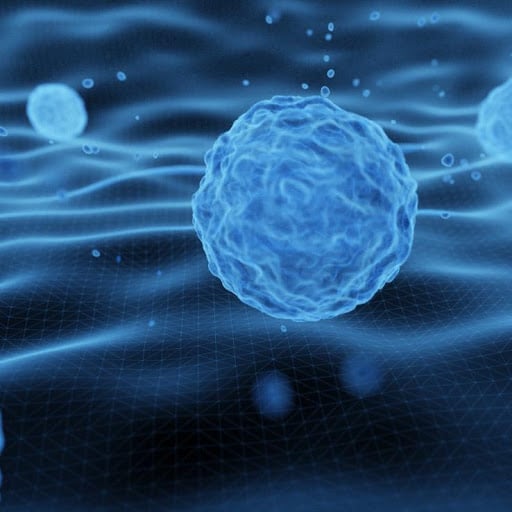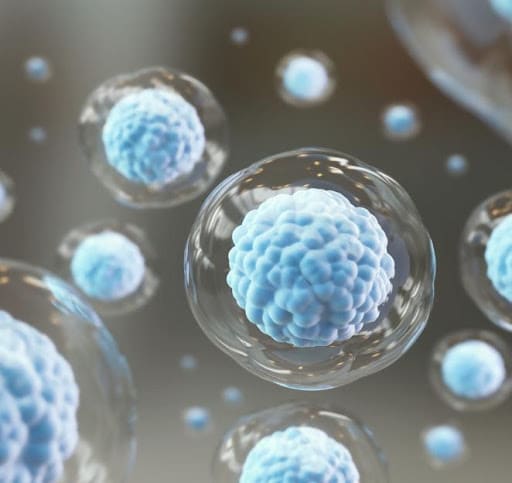What Is A Stem Cell?
Stem cells have the unique potential to self-replicate and convert into cells of different tissues during a person’s life. The majority of bodily cells are specialized and serve a specific purpose in the body. Brain cells, for example, release neurotransmitters (impulses) in response to electrochemical signals from other brain cells; retinal cells are activated by light, and pancreatic cells create insulin. Somatic cells are cells that do not multiply or differentiate into different types of cells. On the other hand, stem cells are undifferentiated cells that do not transform into specific cell types until they receive a signal to do so.
Adult stem cells and embryonic stem cells are the two types of stem cells. Adult stem cells are cells present in the body after birth, whereas embryonic stem cells are retrieved from the very early embryo (blastula).

The term “adult stem cells” does not allude to a feature associated with adulthood; rather, it is used to distinguish these stem cells from stem cells in a developing embryo. Adult stem cells include stem cells found in the bone marrow of adults and children, and stem cells present in the umbilical cord.
The approach of Endogenous Stem Cell Mobilization (ESCM) pertains to the release of stem cells found in the bone marrow after birth.
THE POTENTIAL OF ADULT STEM CELLS
Adult Stem Cells (ASC) are mainly found in the bone marrow, but they can also be found in various tissues such as the liver,1 the intestine,2 muscles,3 the brain,4 the pancreas,5 as well as blood and many other tissues.6
Although local stem cells appear to simply be involved in minimal tissue repair, the job of ASC is to maintain and repair the tissue where they are found.
When the quantity of stem cells present in the tissue is insufficient to repair serious injuries or breakdown, stem cells from the bone marrow are alerted to help heal. It’s worth noting that some tissues, such as the brain and heart, rely heavily on local stem cells for repair; nevertheless, these local stem cells are activated by the migration of Bone Marrow Stem Cells (BMSC) into the damaged tissue.

As a result, BMSC plays an important role in brain and heart repair, even if tissue-derived stem cells are responsible for most of the repair.
Because they were thought to only develop into red blood cells, lymphocytes, platelets, bones, and connective tissue, bone marrow stem cells (BMSC) have historically been thought to have a limited ability to adjust to changes in their environment (or, limited plasticity). A series of discoveries made around the turn of the century changed this viewpoint. BMSC’s extraordinary adaptability has been established in numerous research over the last two decades. BMSC were found to have the ability to transform into muscle cells,7 heart cells,8 endothelium capillary cells,9 liver cells,10 lung,11 gut,12 and skin cells,13 as neural cells.14
Jang et al.,10 for example, carried out a remarkable experiment in which stem cells were co-cultured with either normal or injured liver tissue. A semi-permeable membrane separated the stem cells from the liver tissue, with pores wide enough to allow chemicals to pass through but small enough to prevent cells from moving from one compartment to the other. The researchers used markers for stem cells and liver cells to show that when stem cells were implanted in the presence of injured liver tissue, they quickly transformed into liver cells.
BONE MARROW AND STEM CELLS
Many people believe that the bone is just a lifeless calcium deposit with a solid structure and little blood circulation. This isn’t the case at all. Bones are very much alive, with a lot of blood flowing through them. Given the importance of the bone marrow as a source of stem cells, a brief description of the bone marrow is necessary.
Bone structure is divided into two categories: compact and spongy. The density of these two bone structures differs, as does the organization of the bone tissue. The amount (thickness) and density of compact bone determine a bone’s strength. The spongy bone is where a bone’s blood circulation and “life” are found. The bone marrow is found in small cavities within the spongy bone in this location.
Red and yellow or fatty marrow are the two types of bone marrow. Only the red marrow produces stem cells. Only red marrow is seen in the bones of adolescents. However, fat-storing yellow marrow replaces red marrow in the shaft of long bones as the bones mature. Most red marrow will be replaced by fatty marrow by the age of 28, and red marrow is only seen in the ribs, vertebrae, pelvic bones, and skull.
The change of red marrow into yellow marrow explains the drop in stem cell creation with age because stem cells are only formed in the red marrow. And herein lies one of the most fundamental reasons for aging: as we become older, the number of circulating stem cells diminishes, lowering the body’s ability to repair and replace itself.
References:
- Wang X, Foster M, Al-Dhalimy M, Lagasse E, Finegold M, and Grompe M (2003) The origin and liver repopulating capacity of murine oval cells. PNAS 100(suppl.1):11881-11888.
- Barker N, van de Wetering M, Clevers H. (2008) The intestinal stem cell. Genes Dev. 22(14):1856-64.
- Kuang S, Gillespie MA, Rudnicki MA. (2008) Niche regulation of muscle satellite cell self- renewal and differentiation. Cell Stem Cell. 10;2(1):22-31.
- Revishchin AV, Korochkin LI, Okhotin VE, Pavlova GV. (2008) Neural stem cells in the mammalian brain. Int Rev Cytol. 265:55- 109.
- Burke ZD, Thowfeequ S, Peran M, Tosh D. (2007) Stem cells in the adult pancreas and liver. Biochem J. 404(2):169-78.
- Díaz-Flores L Jr, Madrid JF, Gutiérrez R, Varela H, Valladares F, Alvarez-Argüelles H, Díaz- Flores L. (2006) Adult stem and transit- amplifying cell location. Histol Histopathol. 21(9):995- 1027.
- Abedi M, Greer DA, Colvin GA, Demers DA, Dooner MS, Harpel JA, Weier HU, Lambert JF, and Quesenberry PJ (2004) Robust conversion of marrow cells to skeletal muscle with formation of marrow-derived muscle colonies: A multifactorial process. Exp. Hematol. 32:426-434.
- Fraser JK, Schreiber RE, Zuk PA, and Hedrick MH (2004) Adult stem cell therapy for the heart. Intern. J Biochem & Cell Biol 36:658–666.
- Asahara T, Masuda H, Takahashi T, Kalka C, Pastore C,Silver M, Kearne M, Magner M, and Isner JM (1999) Bone Marrow Origin of Endothelial Progenitor Cells Responsible for Postnatal Vasculogenesis in Physiological and Pathological Neovascularization. Circ Res. 85:221-228.
- Jang YY, Collector MI, Baylin SB, Diehl AM, and Sharkis SJ (2004) Hematopoietic stem cells convert into liver cells within days without fusion. Nature Cell Biol. 6(6):532-529.
- Sanchez-Ramos JR (2002) Neural Cells Derived From Adult Bone Marrow and Umbilical Cord Blood. J. Neurosci Res 69:880– 893.
- Krause DS, Theise ND, Collector MI, Henegariu O, Hwang S, Gardner R, Neutzel S, and Sharkis SJ (2001) Multi-organ, multi- lineage engraftment by a single bone marrow-derived stem cell. Cell 105:369-377.
- Branski LK, Gauglitz GG, Herndon DN, and Jeschke MG. (2008) A review of gene and stem cell therapy in cutaneous wound healing. Burns, July 4.
- Dezawa M, Ishikawa H, Hoshino M, Itokazu Y, and Nabeshima Y. (2005) Potential of bone marrow stromal cells in applications for neuro-degenerative, neuro-traumatic and muscle degenerative diseases. Curr Neuropharmacol. 3(4):257-66




